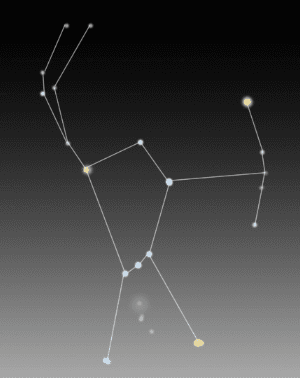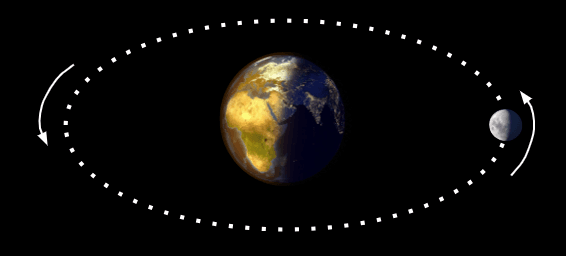Myths about teaching can hold you back
- Year 7
The spinning Earth
I can describe the motions of Earth to explain day, night and a year, and describe the motion of the Moon to explain why it appears to change shape.
- Year 7
The spinning Earth
I can describe the motions of Earth to explain day, night and a year, and describe the motion of the Moon to explain why it appears to change shape.
These resources were made for remote use during the pandemic, not classroom teaching.
Switch to our new teaching resources now - designed by teachers and leading subject experts, and tested in classrooms.
Lesson details
Key learning points
- Earth is a planet. It is a sphere that spins once every 24 hours.
- Earth's spin explains day and night.
- Earth orbits the Sun, with each orbit taking 365.25 days (1 year).
- Earth orbits the Sun in an almost perfect circle.
- The Moon orbits the Earth about once per month (27.3 days), this explains why the Moon appears to change shape.
Keywords
Sphere - A sphere is the shape of a ball.
Spin - Spinning objects are rotating.
Day - One day is the time taken for Earth to complete one spin (24 hours).
Orbit - An orbit is the movement of one object in a loop around another object.
Year - One year is the time taken for Earth to orbit the Sun (365.25 days).
Common misconception
Pupils can find it challenging to see how the movements of Earth as seen from the perspective of space (looking back at Earth) give rise to the observations experienced from Earth's surface.
Model the motions of objects in space with pupils as part of the model (i.e. representing Earth, moving as Earth moves) and with pupils observing the model. This enables them to experience how the same motion appears from both perspectives.
To help you plan your year 7 science lesson on: The spinning Earth, download all teaching resources for free and adapt to suit your pupils' needs...
To help you plan your year 7 science lesson on: The spinning Earth, download all teaching resources for free and adapt to suit your pupils' needs.
The starter quiz will activate and check your pupils' prior knowledge, with versions available both with and without answers in PDF format.
We use learning cycles to break down learning into key concepts or ideas linked to the learning outcome. Each learning cycle features explanations with checks for understanding and practice tasks with feedback. All of this is found in our slide decks, ready for you to download and edit. The practice tasks are also available as printable worksheets and some lessons have additional materials with extra material you might need for teaching the lesson.
The assessment exit quiz will test your pupils' understanding of the key learning points.
Our video is a tool for planning, showing how other teachers might teach the lesson, offering helpful tips, modelled explanations and inspiration for your own delivery in the classroom. Plus, you can set it as homework or revision for pupils and keep their learning on track by sharing an online pupil version of this lesson.
Explore more key stage 3 science lessons from the Our solar system and beyond unit, dive into the full secondary science curriculum, or learn more about lesson planning.

Equipment
Licence
Prior knowledge starter quiz
6 Questions
Q1.What is the best description of the shape of Earth?
Q2.Starting with the smallest, put these objects in order of increasing size.
Q3.How long does it take for Earth to spin once on its axis?
Q4.Which statement correctly explains why we have day and night.
Q5.Which is the correct statement about Earth, the Moon, the Sun and the stars?
Q6.Which is the correct explanation for why stars seem to move across the sky?
Assessment exit quiz
6 Questions
Q1.Which is the best description for the shape of Earth?
Q2.What is the name of the imaginary line about which Earth spins?

Q3.In which direction does Earth spin?
Q4.In winter in the UK, (northern hemisphere) the constellation Orion is visible in the night sky. Which two statements correctly explain why?

Q5.Put these seasons in the correct order, starting with summer.
Q6.How long does it take for the Moon to orbit Earth?



